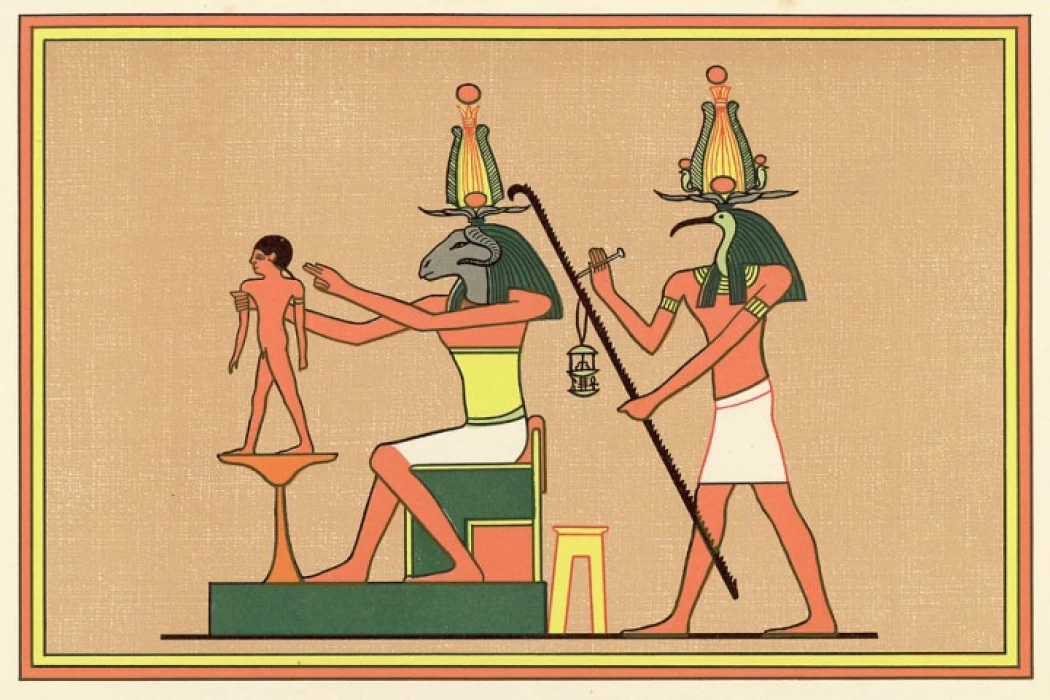
God Khnum | God of the Waters
Informations About God Khnum
Only history can unveil the secrets and reveal many mythological stories, of which the god Khnum had a share in the pottery during the time of the Pharaohs. There are many stories about this god creating humans through his pottery wheel, and forming young children from the Nile silt available at Aswan and placing them in their mothers’ wombs.
Khnum has become, over the years, one of the most important symbols of pottery in the world, or more precisely, he gave pottery its first kiss of life. Some considered him the god of pottery, and his name was derived from the verb “Khnem” meaning to create. He worshipped with his two wives, "Satet and Anqet," at the Philae Temple, which is adjacent to the waterfall region where he spent much of his time.
It is known that pottery has been in circulation since ancient times. The Pharaohs used it in making pottery vessels, and then their descendants inherited it. Today, the area of ancient Egypt, specifically Fustat, is very famous for it. Khnum, the god, appeared in the form of a man with a ram's head and double horns. He was known as the creator of living beings, because he created man from the "clay of the Nile" and took on secondary functions as a guardian of the sources of the Nile.
He was also called the "potter" who forms the egg from which all life emerges. He became especially famous in the texts found in the Temple of Ethna, which date back to the first century AD. Since this period, the ancient Egyptians considered Khnum the god of pottery.
On the western bank of the Nile, about 100 metres from the riverbed, lies the Temple of Khnum, which is perpendicular to one axis. The floor of the temple is about 9 metres below the level of the modern land of the city of Ethna, and is descended by a modern staircase.
God Khnum
This deity was known as the god of the waters that circulated in the lower world, in this way, when the sun was shipwrecked in the darkness of the night, Khnum unconsciously joined it.
The ram god, whose name is derived from the verb "khnem" meaning "to create," indicating that he was a creator from the beginning. Perhaps because of his creative ability, and because the phonetic connotation of the ram (bA) matches the word "ba" (meaning: spirit), he was referred to by the title (bA Ra).
Among the most outstanding functions of this god in Egyptian religion, is that of creating living beings, men, and gods thanks to his potter's wheel, a place from which many claimed that the primordial egg had been born.
It is worth mentioning that with the pottery function, with which he created people at the same time as his Ka, he was given the name "The father of fathers and mother of mothers" in such a way that Khnum means literally "the modeler".
In the same way, the oldest legends tell, that at the beginning of time, Khnum was dedicated to creating each man and each woman separately, but one day, Khnum woke up tired of doing this task, so without thinking he broke his lathe potter, thus introducing a different part of it in each woman, so each of them was given the role of giving birth to the next generations.
His Association with Other Deities. He was associated with the goddesses Menhet and Neith at the temple of Esna.
Khnum, along with the goddesses Satet and Anqet, formed the First Cataract triad at Elephantine. He was also united at Elephantine with the gods Shu and Horus. On the other hand, the Greeks equated him with the god Amun at Thebes, perhaps because both were associated with the ram.
Elephantine Island and the region surrounding the Aswan Falls were thought to be protected by Khnum. "Lord of the Falls" was another name for him in the Old Kingdom. During the New Kingdom, he and his wife, Satis, and their daughter, Anukis, formed what is known as the "Elephantine Triad." He was worshipped in many areas of Upper Egypt and Nubia, but his worship declined in northern Egypt and the Delta. Among his most important worship sites were Elephantine Island, Philae, Esna, Edfu, Asyut, Kom Ombo, and Mendes. Since the First Dynasty, the belief in sacred rams has been known.
Esna Temple
His temple at Esna is his best-preserved temple, and its texts provide us with a wealth of information about this deity and his worship.
The Greco-Roman Temple of Khnum in Esna was built during the reign of the Roman Emperor Claudius and dedicated to the worship of the ram-headed creator god. All that remains of the temple is the hall, whose ceiling rests on columns. The ceiling, supported by 24 columns, is decorated with images depicting rural scenes and hymns to the god Khnum. This temple was discovered in the 1840s. You can see the carved plant motifs and images of Roman celestial beings, along with hieroglyphic inscriptions representing the rituals performed at the temple.














